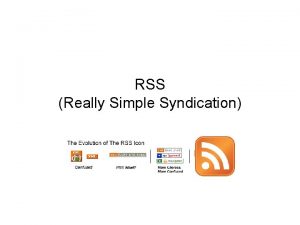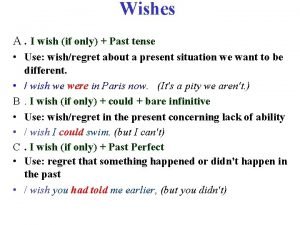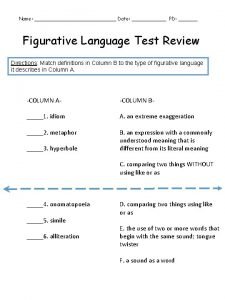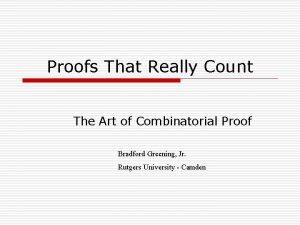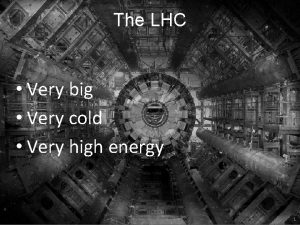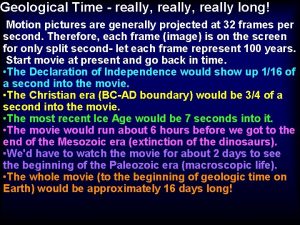Really Very Simple Process Its very simple Do




























- Slides: 28

Really Very Simple Process

It’s very simple • Do you not like it? • Do you like it? Like all kinds of art, what we end up appreciating are those things that we become educated in or develop a taste for

Ground Rules Odor Free Water Proper temperature White Backdrop Crackers Spit Cup Concentration

• Color – Concentration – Variety – Age

Wine Color Chart



1. young cabernet, 2. old cabernet/merlot, 3. young merlot, 4. young syrah, 5. young pinot noir, 6. old pinot noir 1. Vinho Verde / Pinot Gris, 2. Sauvignon Blanc, 3. Marsanne / Chenin Blanc / Viognier, 4. Chardonnay, 5. Old White Wine, 6. Sherry


• Clarity – Brilliant →Clear→Dull→Cloudy – Severely Cloudy – Heat unstable – proteins in wine when heated break their bonds and make the wine look cloudy – Cold unstable – tartrate crystals – Microbial – yeast, bacteria • Note-Many of the best wines are unfiltered to avoid stripping the wine of its precious aromas and flavors. In this case a very slight haze can be normal or even a good thing.

• Aroma – The sense of smell and detecting the aromas in wine is the primary means through which wine is tasted and evaluated.


• • • Variety Origin Winemaking Age Flaws


Acid Sweet Umami TASTE Salt Bitter

BITTER UMAMI SOUR SALTY SWEET 2003 info: old info based upon misinterpreted research done in 19 th century!

• • • Sweetness Acidity Tannin Body/Weight Flavor

Aroma Taste FLAVOR Psychological Touch

• • • Sweetness Acidity Tannin Body/Weight Flavor Quality

Quality ‘The quality of a wine is the totality of its properties. . . which render it acceptable or desirable. In effect, it is the totally subjective pleasure provided by drinking the wine which conditions judgement. ” Emile Peynaud

Balance “…so that no single one of them is obtrusive on the palate. ” Emile Peynaud

Sensory Evaluation • Components of Wine –Residual Sugar –Acidity –Tannin –Alcohol Balance


Sensory Evaluation • • • Control Residual Sugar Acidity Tannin Alcohol • TCA – cork taint

Sensory Evaluation • • • Control Residual Sugar Acidity Tannin Alcohol • TCA – cork taint

Sensory Evaluation • • • Control Residual Sugar Acidity Tannin Alcohol • TCA – cork taint

Sensory Evaluation • • • Control Residual Sugar Acidity Tannin Alcohol • TCA – cork taint

Sensory Evaluation • • • Control Residual Sugar Acidity Tannin Alcohol • TCA – cork taint
 Contoh rss
Contoh rss Very bad to very good scale
Very bad to very good scale Used to express very large or very small numbers
Used to express very large or very small numbers There is very few soup in the bowl
There is very few soup in the bowl Receiving table/area
Receiving table/area Quantifiers for milk
Quantifiers for milk The emigree
The emigree When a train increases its velocity its momentum
When a train increases its velocity its momentum Sunny rainy windy cloudy
Sunny rainy windy cloudy If its a square it's a sonnet summary
If its a square it's a sonnet summary Its halloween its halloween the moon is full and bright
Its halloween its halloween the moon is full and bright Its not easy but its worth it
Its not easy but its worth it Wish + past
Wish + past Scientific notation is a shorthand way of writing really
Scientific notation is a shorthand way of writing really What leaders really do hbr
What leaders really do hbr Tell us about a film you really like
Tell us about a film you really like Scientific notation is a shorthand way of writing really
Scientific notation is a shorthand way of writing really Three of a kind all letting fly
Three of a kind all letting fly Tongue twister spring
Tongue twister spring The fly buzzed past us
The fly buzzed past us A marketer can really satisfy everyone in the
A marketer can really satisfy everyone in the Heavenly father are you really there song
Heavenly father are you really there song Enos 1:15
Enos 1:15 Have you really tried to save gas poster meaning
Have you really tried to save gas poster meaning Proofs that really count
Proofs that really count It was time to go home but the bell refused to ring
It was time to go home but the bell refused to ring Do ghosts really exist
Do ghosts really exist Breaking bad powerpoint template
Breaking bad powerpoint template Tell me whats really going on
Tell me whats really going on
